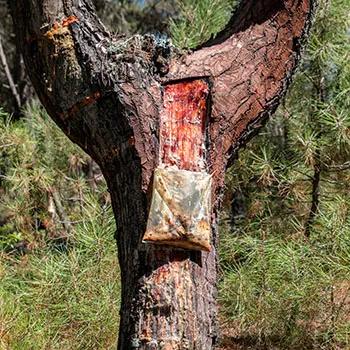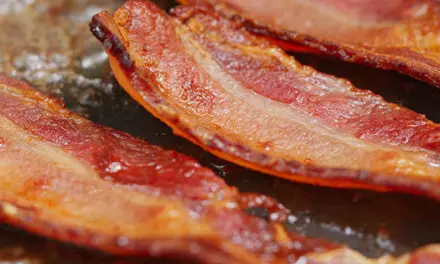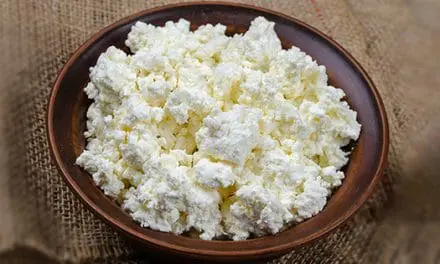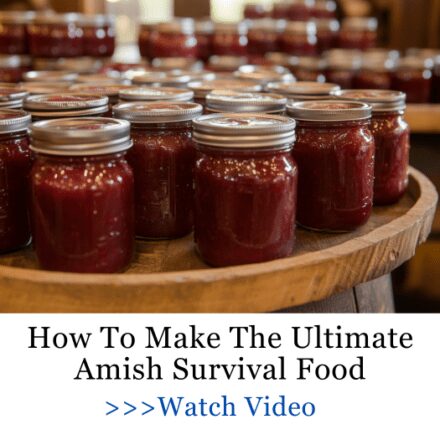Refrigeration is a modern luxury, but our ancestors thrived without it by harnessing the power of physics and microbiology. Simply put, they outsmarted rot with no electricity to rely on. So how did people store food before refrigerators?
They developed improvised methods to preserve food year-round—solutions born from keen observation, resourcefulness, and ingenuity.
On our homestead, I’ve put some of these techniques to the test. The result?
Fresh fruits and veggies lasting up to eight months! Yes, eight full months. These methods will not only slash your costs but also enhance self-reliance.
Ready to ditch the tech and rediscover the brilliance of old-school food preservation?
Let’s talk about these techniques.
Storing Root Vegetables in Sand Layers 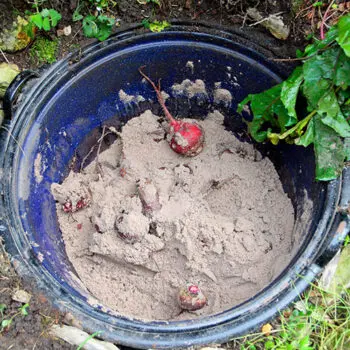
The first method I’ll share with you is one I learned from the Amish Ways book. Honestly, I wish more people knew about it; it’s a game-changer for any homesteader.
Root veggies like carrots, beets, and potatoes last months when buried in damp sand. The sand acts as a thermal buffer, stabilizing temperatures between 32–40°F while maintaining 85–95% humidity—critical to prevent dehydration. I’ve stored carrots this way in wooden crates layered with sand, and they stayed crisp for 5 months without sprouting or rotting.
Use slightly moist (not wet) sand to avoid mold. Bury veggies so they don’t touch each other, and keep the crate in a dark corner of a basement or shed. This mimics the “root cellar” effect without needing a dedicated underground space.
Stone Troughs Filled With Cool Water for Dairy Storage
Stone troughs kept milk and butter safe by exploiting two principles: thermal mass and evaporative cooling.
Granite or slate basins absorb cold overnight and release it slowly during the day, while water evaporation draws heat from the air. In my trials, a granite trough shaded by trees kept milk at 54°F—cool enough to delay souring for 24–36 hours, even in 80°F heat.
For best results, use water from a spring or well (45–55°F) and refresh it twice daily. Position the trough where airflow maximizes evaporation, like under a tree or eaves. This method won’t replicate fridge temps, but it’s ideal for short-term storage during power outages or off-grid cheese-making.
Burying Sealed Containers Underground
Before root cellars became common, people preserved foods like grains, fermented veggies, and even meats by burying them in airtight containers 3–4 feet deep.
Soil acts as a natural insulator, maintaining temperatures between 50–55°F year-round—cooler than summer heat but warmer than winter freezes.
Use containers made of non-reactive materials: glazed clay, glass, or tin-lined wood. Avoid plastics—they degrade. Bury in well-drained, sandy soil (clay traps moisture and rusts lids).
Mark the spot with a subtle garden stake. I once lost a crock of pickled beans for two seasons because I forgot where I’d hidden it!
While burying food has worked for centuries, the Amish have taken off-grid refrigeration to another level. They’ve built this electricity-free fridge that doesn’t just keep food cool; it preserves meat, milk, cheese, and even temperature-sensitive medicine, even when it’s over 100°F outside.
This isn’t a root cellar, but a real off-grid fridge. When the next blackout hits, this Amish invention could save thousands of lives.
Storing Butter in Crocks Submerged in Wells 
Before wax paper or fridge doors, homesteaders kept butter edible for weeks by lowering sealed crocks into wells. The constant 50–55°F groundwater temperature prevented melting in summer and freezing in winter.
Use crocks with tight-fitting lids (grease the rim with lard for a better seal). Submerge only in clean, slow-moving water to avoid sediment.
Rotate stock every 2–3 weeks for freshness. One caveat: High humidity can soften butter over time, so this works best for short-term storage or in cooler climates.
Drying Fruits on Rooftops or Hanging on Strings
Sun-drying transforms ripe fruit into shelf-stable snacks by reducing moisture content below 20%—a threshold where mold and bacteria struggle to survive. In arid climates, homesteaders spread sliced apples, grapes, or figs on flat rooftops, leveraging relentless sun and dry air. In humid regions, they hung fruit garlands indoors near hearths or breezy windows.
Key rules: Slice fruit uniformly (¼-inch thick) for even drying. Avoid metal trays—they overheat. Use bamboo mats or cheesecloth instead.
Watch for birds; I lost a batch of peaches to crows once by skipping a mesh cover. For string drying, thread slices with a needle and hang in a dust-free, ventilated spot. Rotate daily to prevent sticking.
Pickling in Seawater Brine 
Seawater’s natural salinity and trace minerals like magnesium and potassium made it a free, potent preservative for coastal communities.
Vegetables submerged in undiluted seawater brine undergo lacto-fermentation, where salt inhibits harmful bacteria while Leuconostoc microbes produce lactic acid.
For a greater chance of success, use fresh seawater collected away from polluted shores. Boil it first if concerned about contaminants, though heat kills beneficial microbes.
Add spices like dill or mustard seeds to mask oceanic flavors. Store jars in a cool, dark spot. Pro tip: Ferment cabbage this way, and you’ll get a rudimentary kimchi with a briny kick.
Sealing Cooked Food in Animal Bladders
Before synthetic packaging, cooks preserved meats, broths, and even cheeses by encasing them in cleaned pig or sheep bladders.
The bladder’s collagen-rich membrane shrinks as it dries, creating an airtight seal that blocks oxygen and microbes.
I tested this with a pig bladder (sourced from a local butcher) filled with cooked lentils and herbs. After drying for two days, the bladder hardened into a drum-like casing, and the lentils stayed fresh for 18 days at room temperature—triple their usual shelf life.
To replicate this:
- Soak fresh bladders in saltwater for 24 hours to remove odors.
- Fill while still pliable, leaving no air pockets.
- Tie the opening with twine and hang in a dry, cool area.
Bladder-sealed foods won’t last forever, but they’re ideal for short-term storage or travel. One warning: The process is labor-intensive. After my third attempt, I switched to linen-wax wraps for daily use—though bladders still shine for special occasions.
Using Pine Resin to Seal Food Containers 
Pine resin isn’t just for patching canoe holes—it’s a food-grade sealant with built-in antimicrobial properties.
Pioneers collected sticky resin from trees like Pinus sylvestris (Scots pine), heated it gently over coals, and brushed it onto jars or baskets to create an airtight, waterproof layer.
The key is low-temperature processing. Overheating resin destroys its natural terpenes, the compounds that inhibit mold. Aim for 140–160°F (use a candy thermometer).
Apply thin layers, letting each cool before adding another. Pro tip: Score the tree bark lightly to harvest resin sustainably—don’t gouge deep enough to harm the cambium layer.
While modern paraffin is easier, pine resin offers a zero-waste alternative for sealing ferments or dried goods. Just avoid it if you’re allergic to conifers; my neighbor broke out in hives after handling resin-coated utensils.
Preserving Eggs in Waterglass (Sodium Silicate)
Waterglass—a syrupy solution of sodium silicate—creates an alkaline seal that plugs eggshell pores, blocking bacteria and oxygen. Homesteaders in the 1800s stored eggs this way for up to 9 months.
I preserved two dozen fresh eggs in a 10% waterglass solution (1 part sodium silicate to 9 parts boiled water) at 40°F.
Related: How to Keep Eggs Fresh for Months with Mineral Oil
After 7 months, 18 eggs remained intact, with yolks firm and whites clear. The two cracked ones? They reeked of sulfur—a stark reminder to cull flawed eggs first.
Use room-temperature, unwashed eggs with intact blooms (the natural protective coating). Submerge them completely in a glass or stoneware container—metal corrodes.
Store in a cellar or cool closet (50°F max). Drawbacks? Waterglass raises the pH, giving eggs a slight “flat” taste. Scrub shells thoroughly before use and cook them fully.
Why Bother With These Forgotten Methods Today?
Modern refrigeration fails during power outages, and not all homesteaders have reliable energy access. Traditional food storage techniques offer redundancy. Plus, they’re cheaper.
Burying a clay pot of butter in a shaded stream costs nothing, unlike running a fridge 24/7. This method helps keep dairy products and other perishables food fresh for an extended period of time.
The goal isn’t to abandon modern tools but to layer them with forgotten wisdom. Pair your chest freezer with a root cellar.
Store dry foods like grains and legumes in airtight containers to preserve food naturally. Hybrid systems are unstoppable. So which method are you going to try first?
FEMA Will Never Take Your Stockpile If You Hide It Here
100+ Long Lasting Foods that Can be Stored Without Refrigeration (Video)
Foods To Stock Up On This Winter




